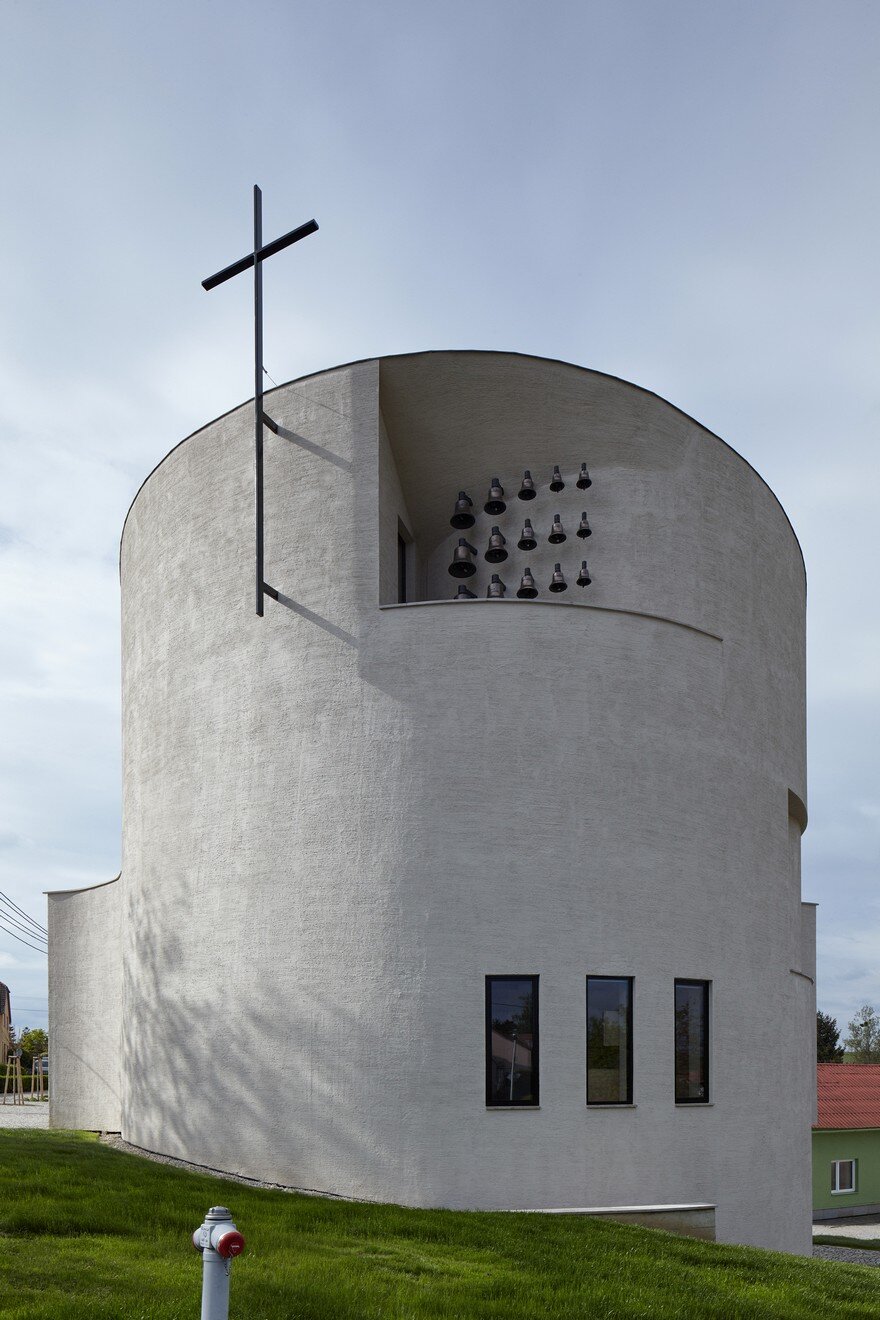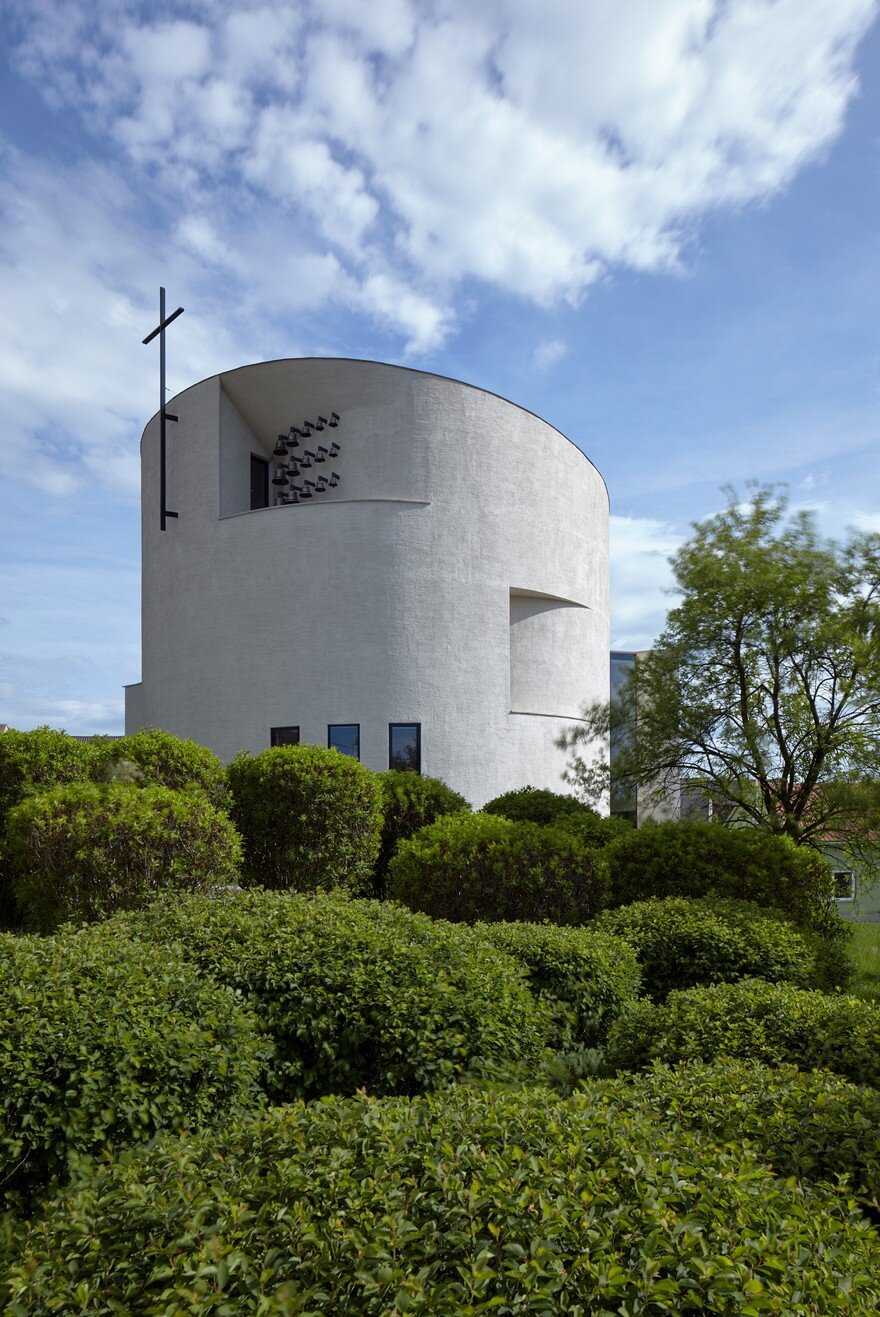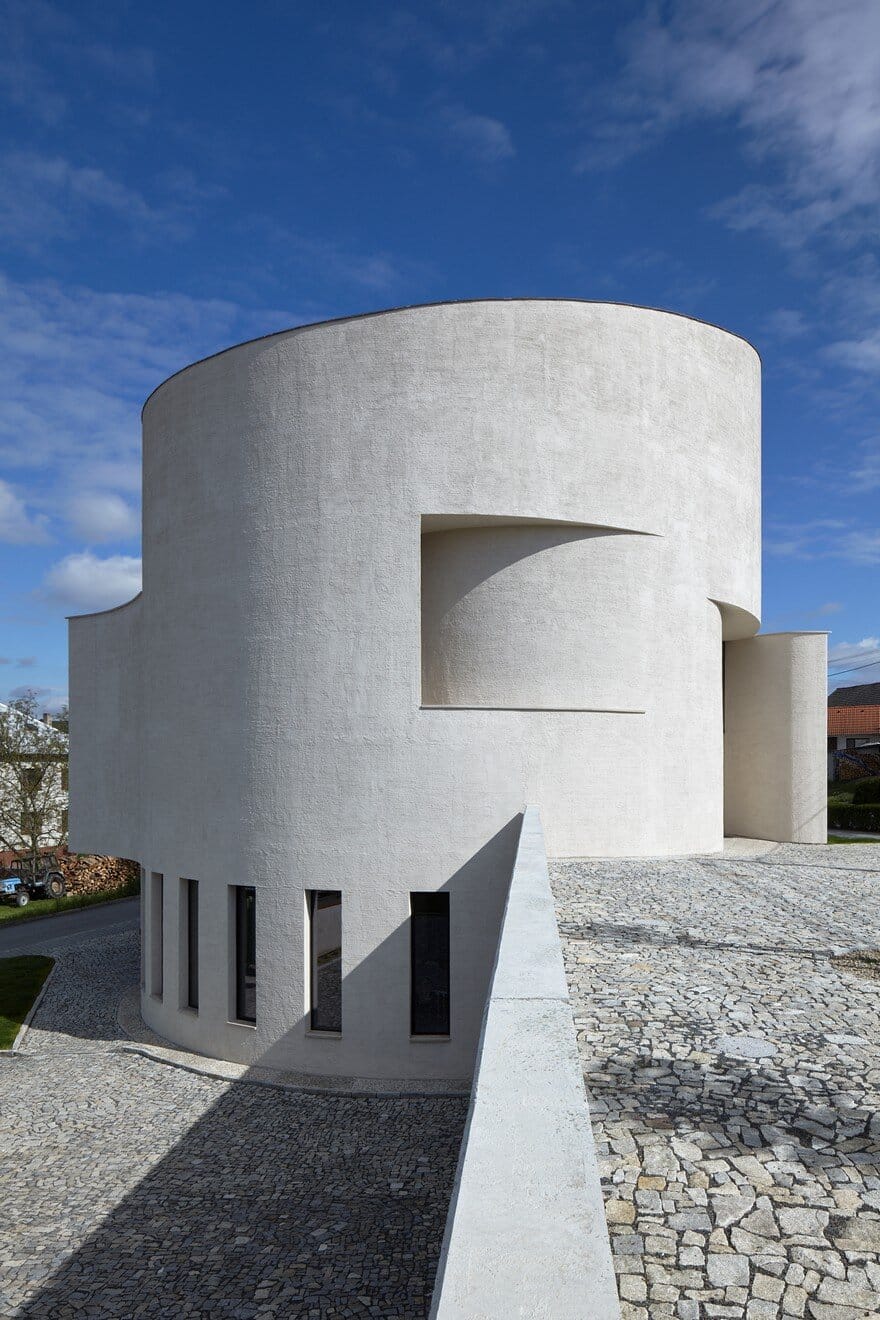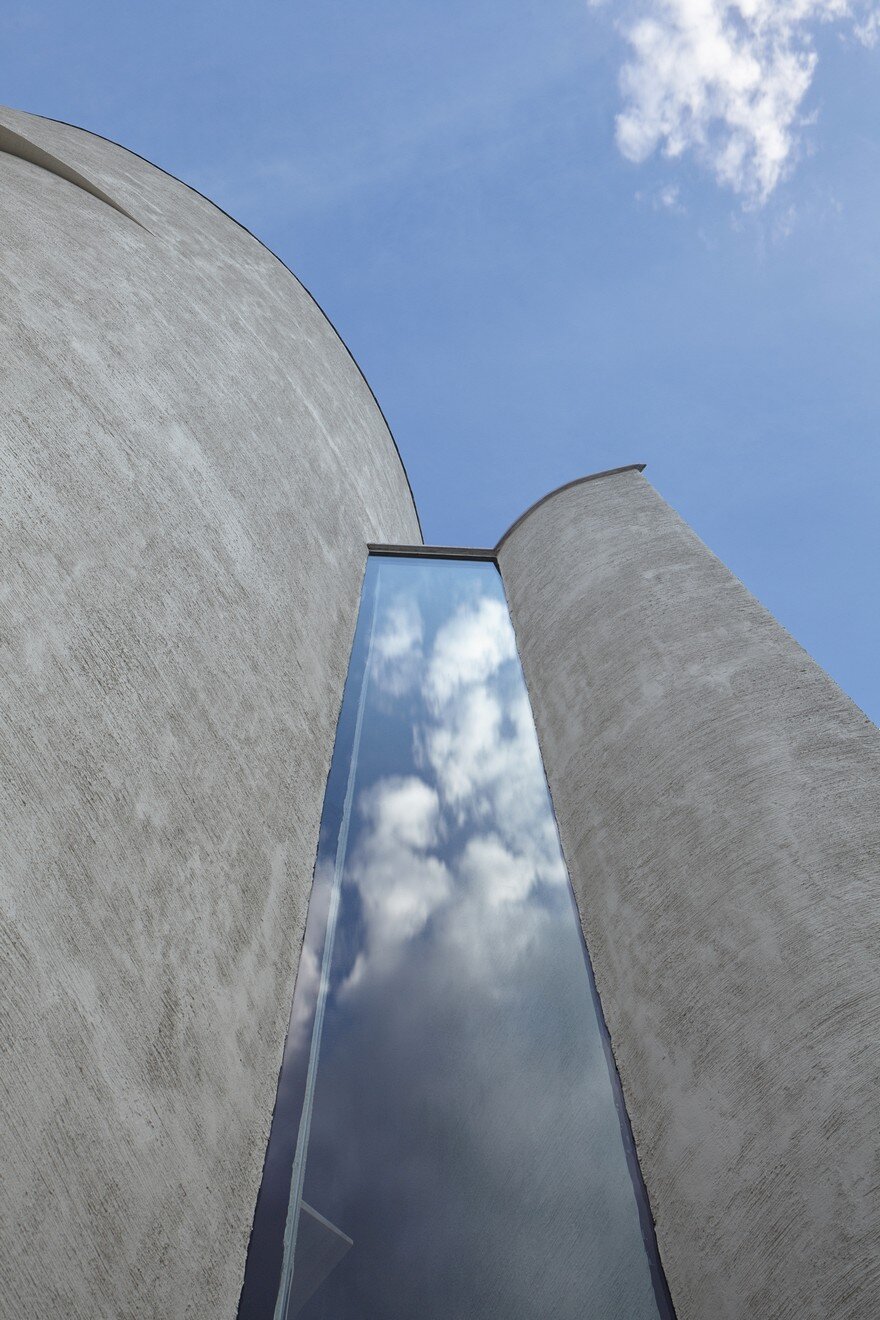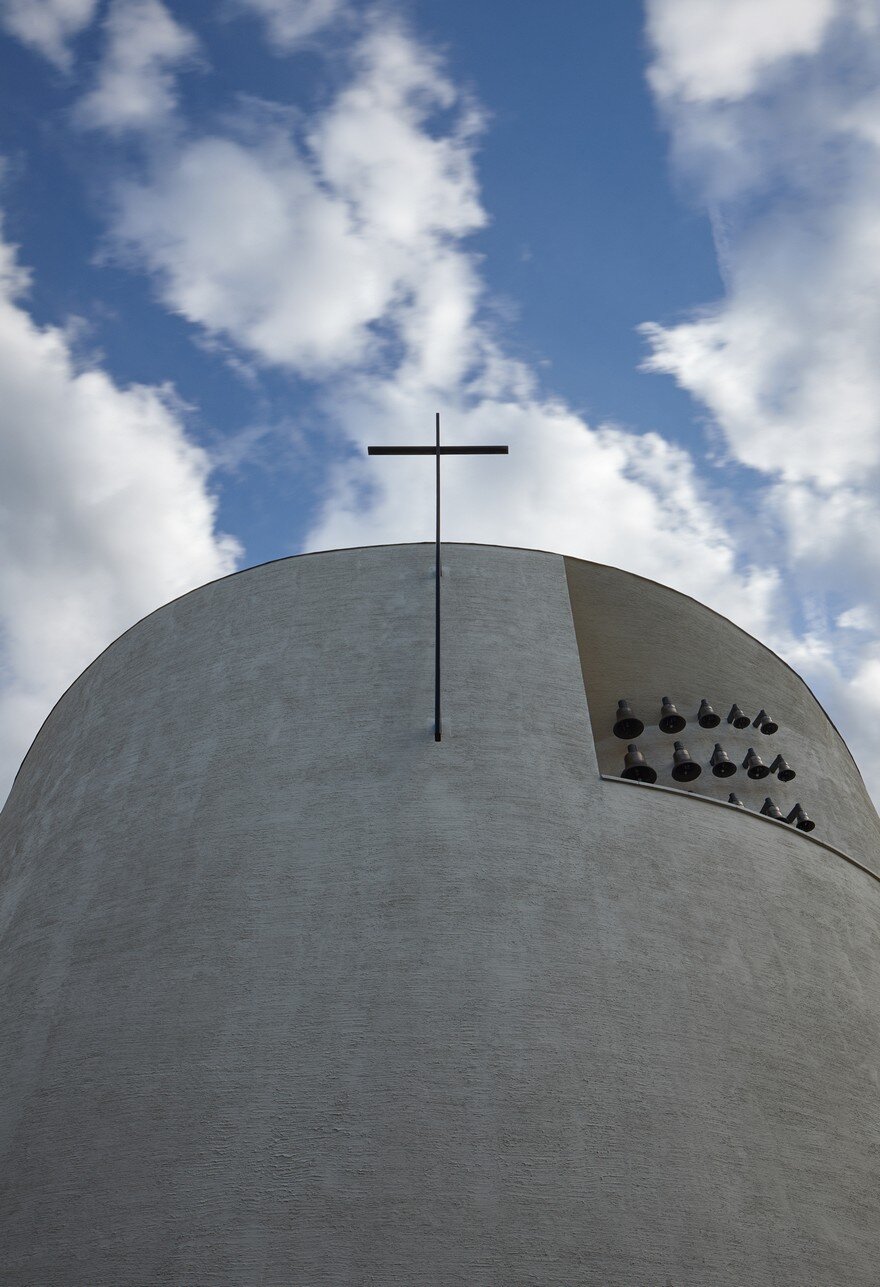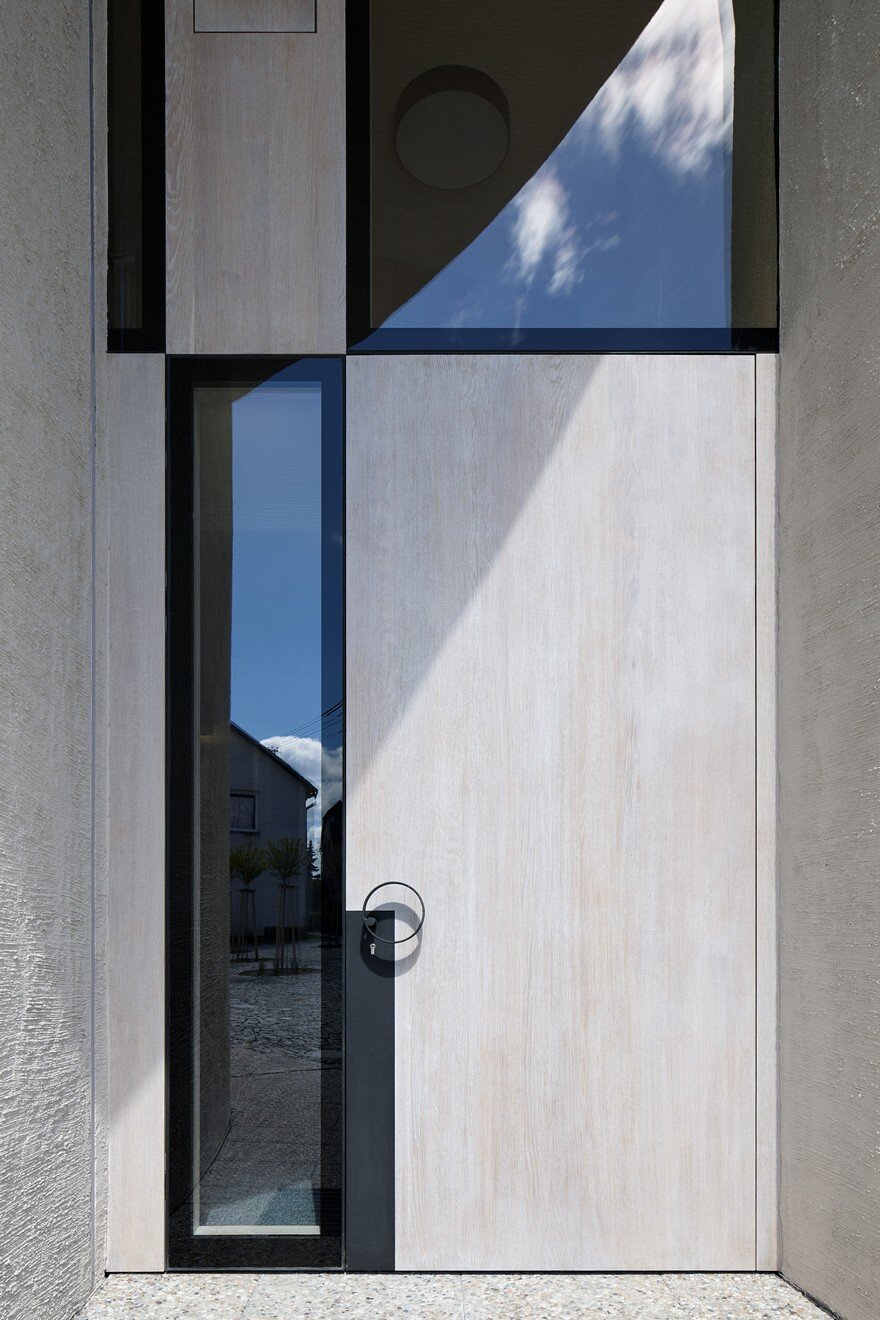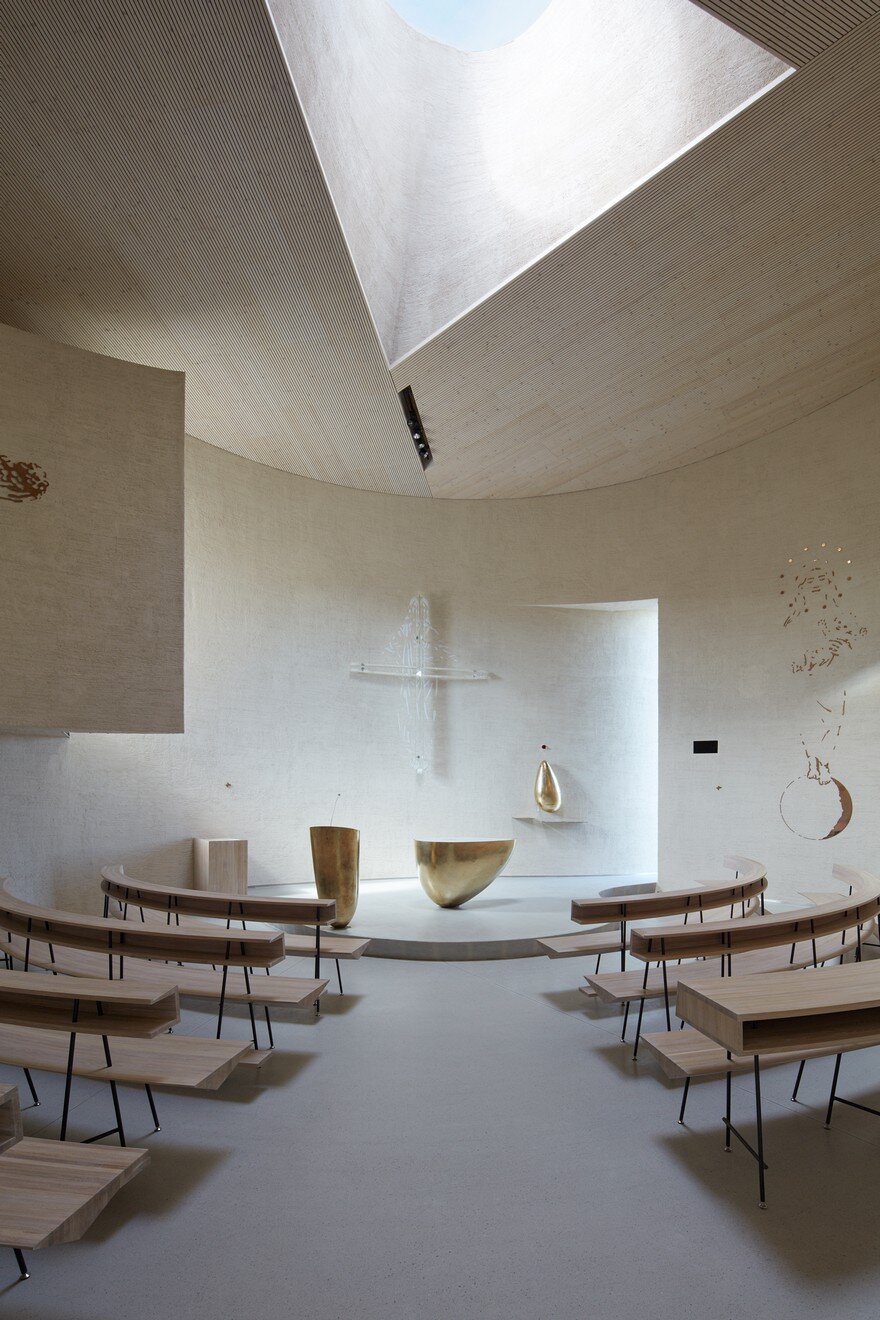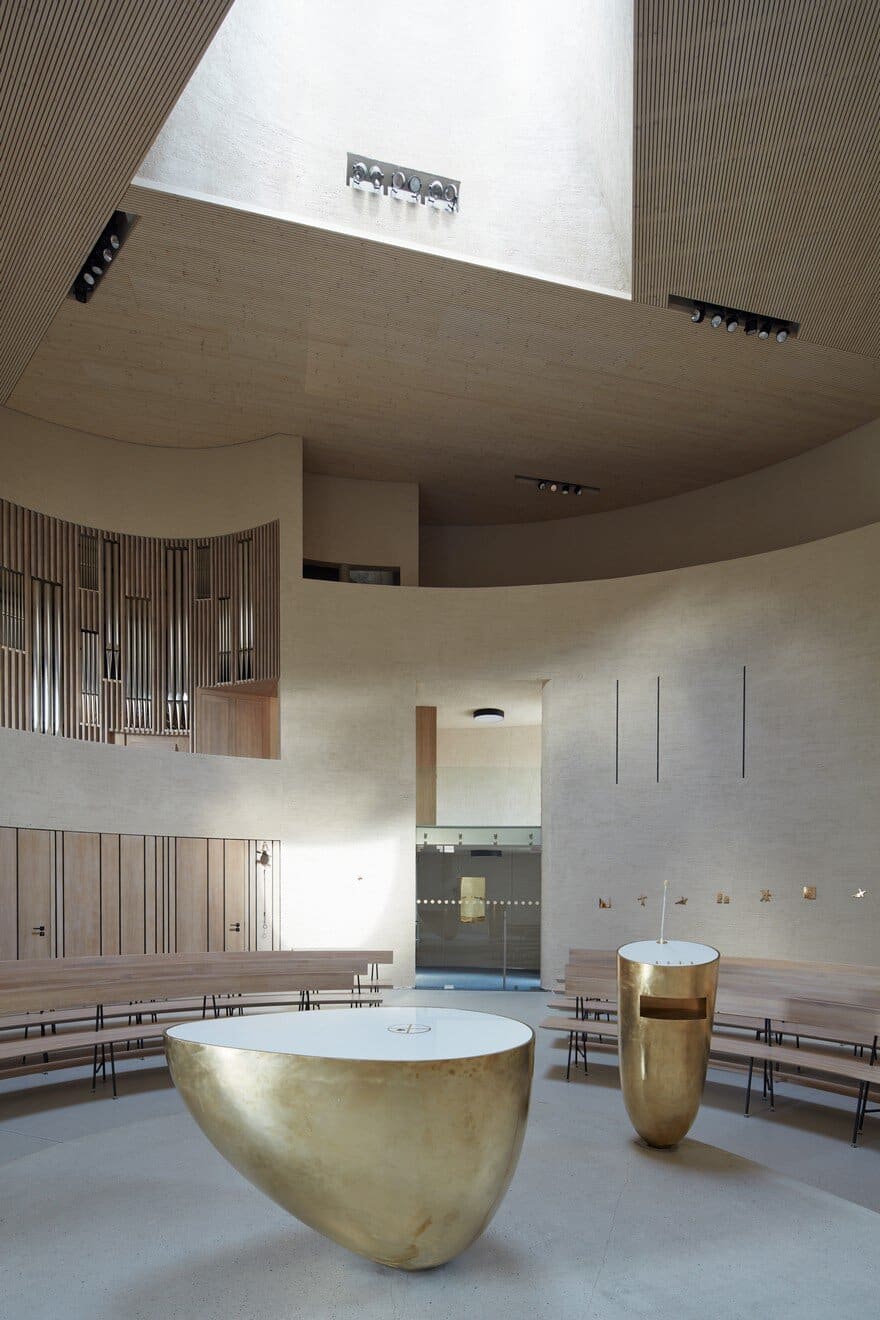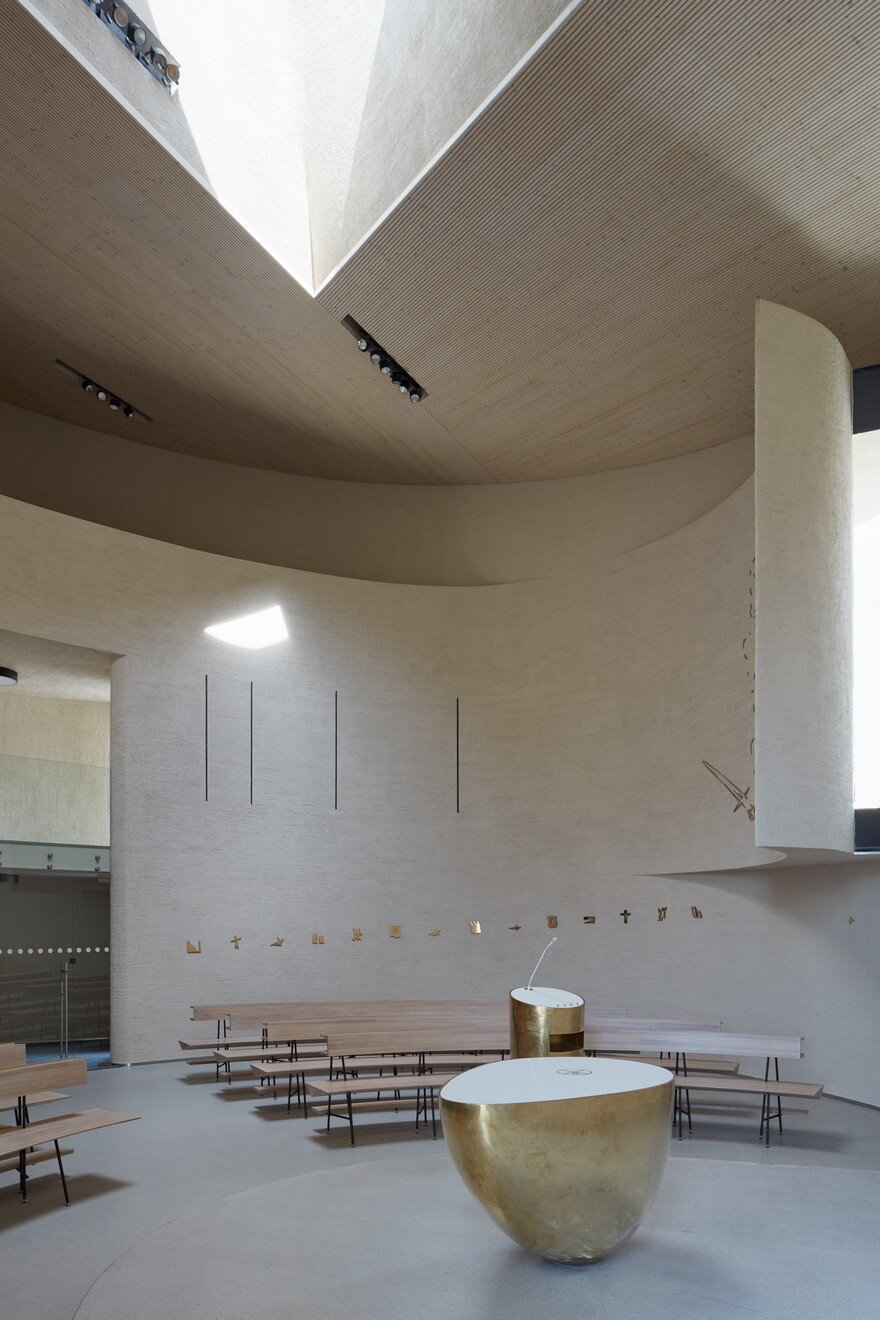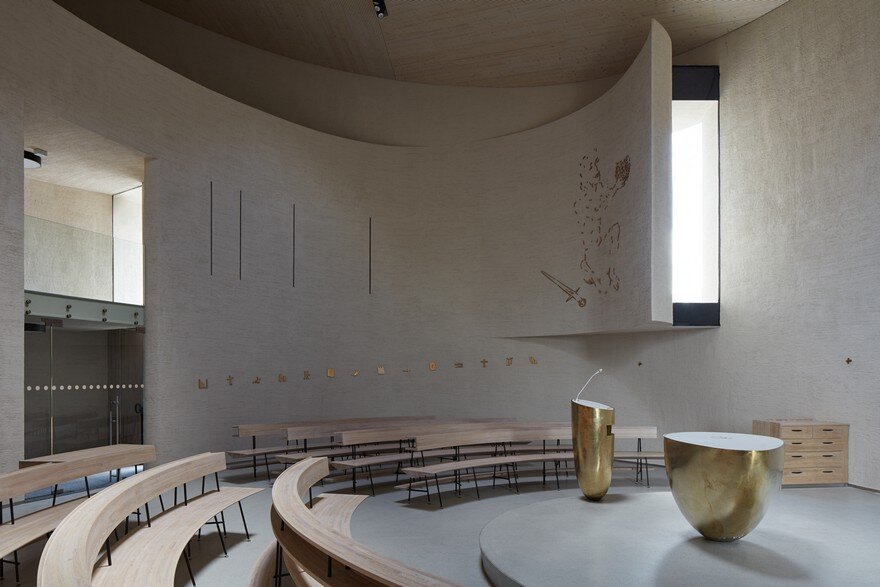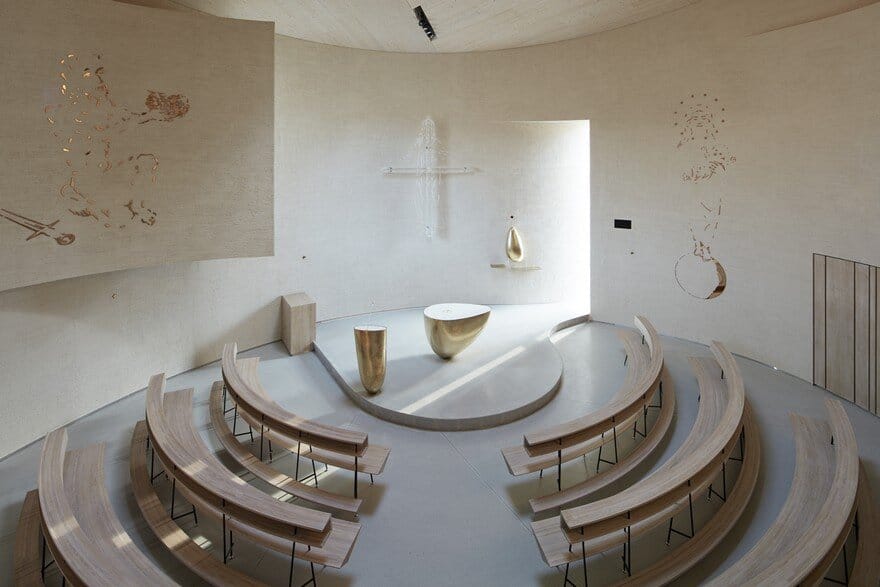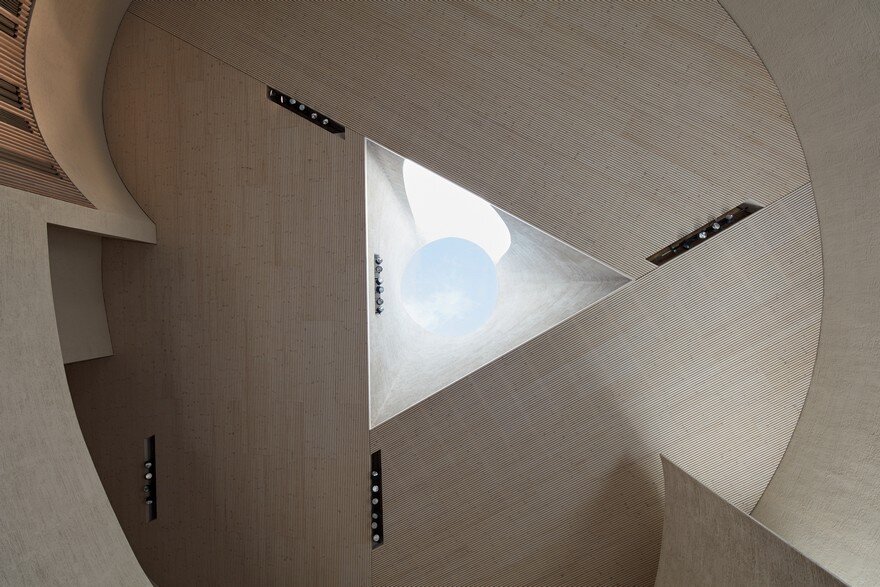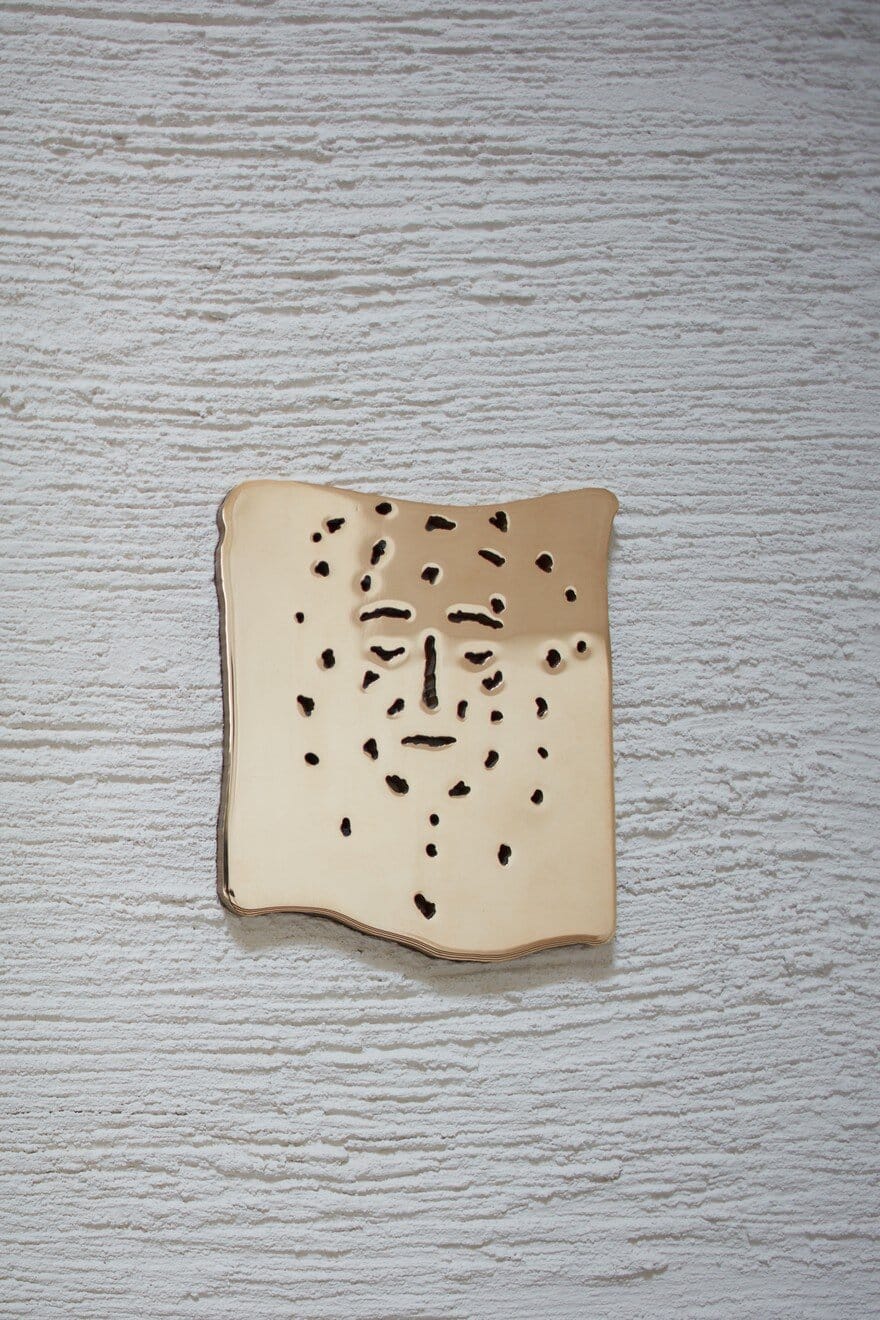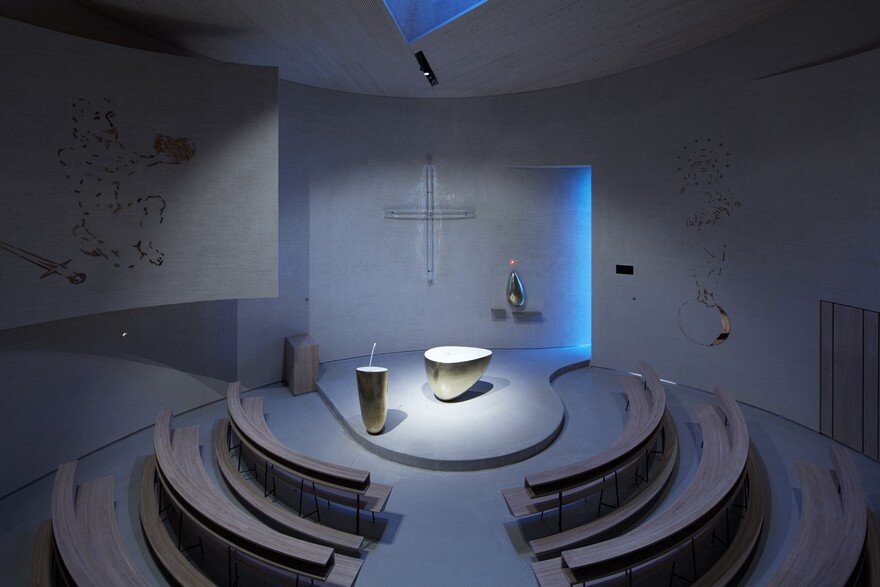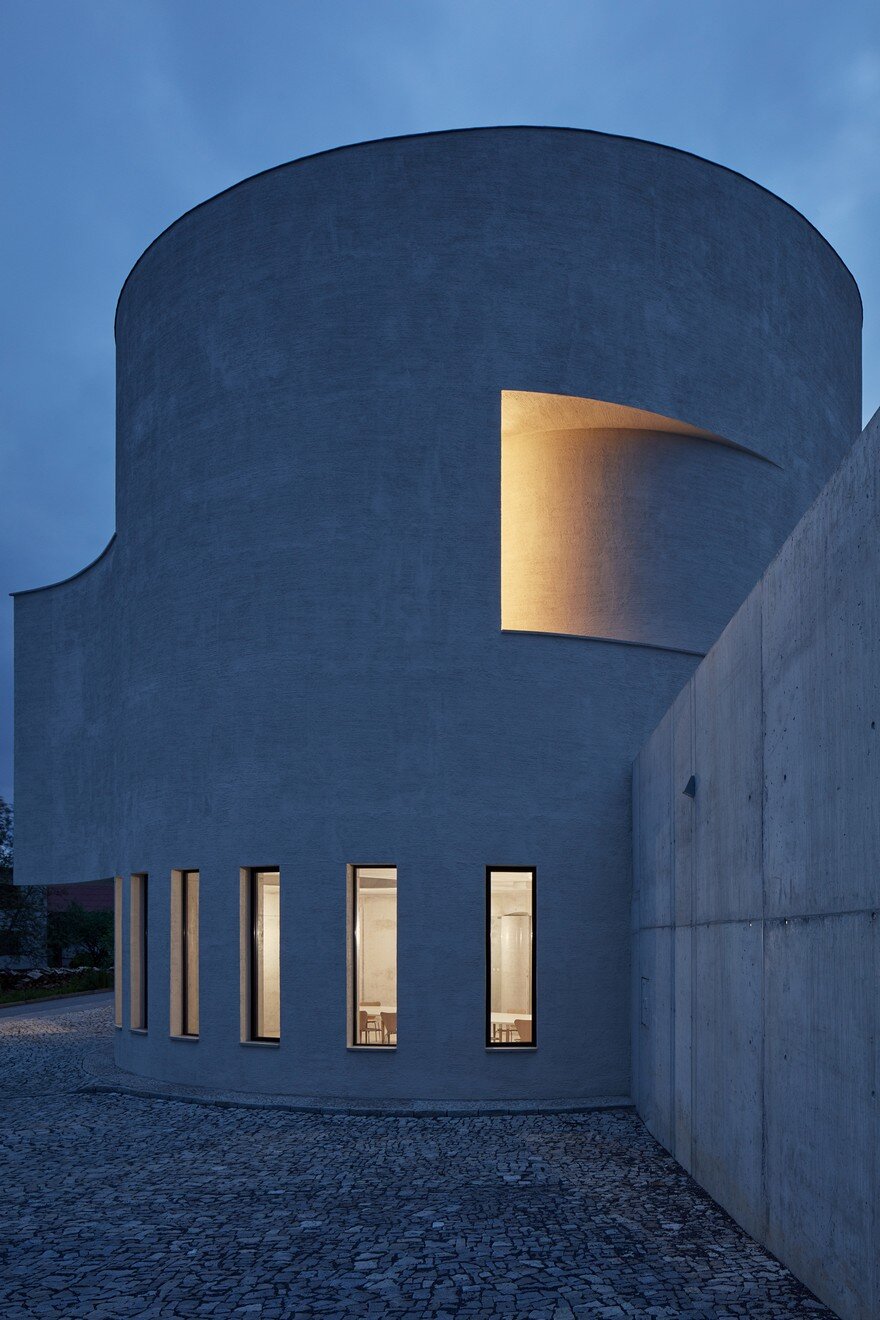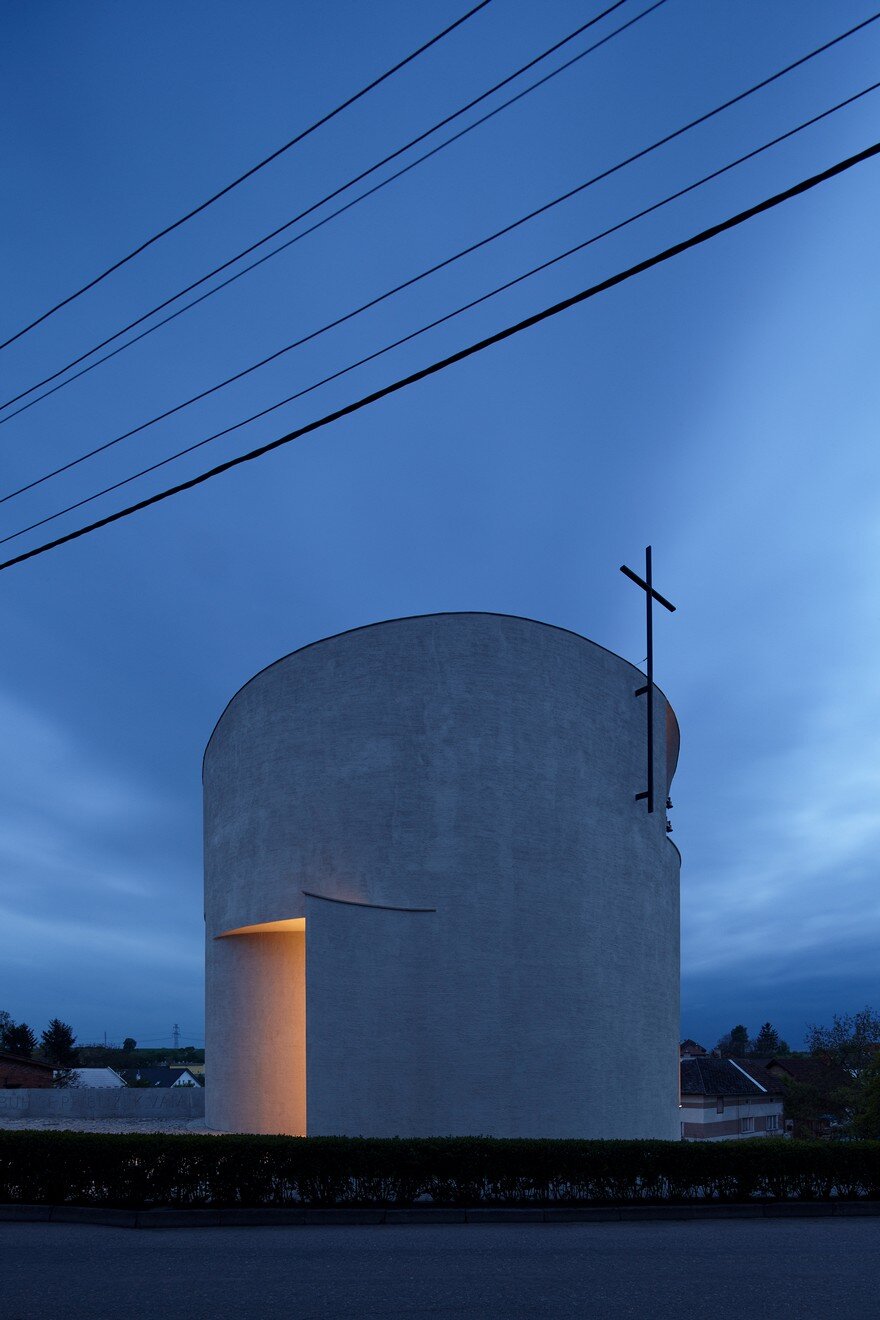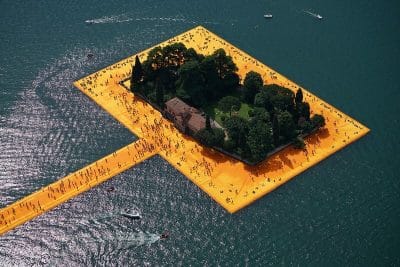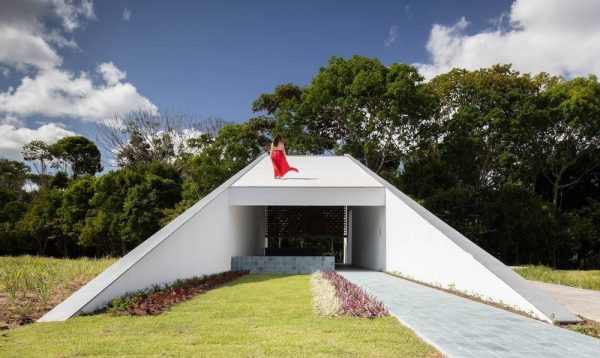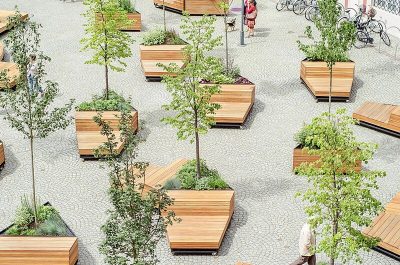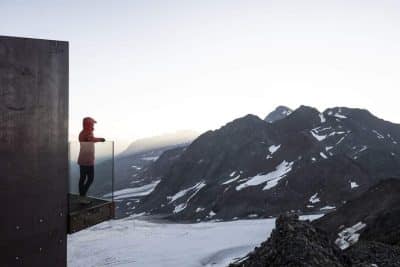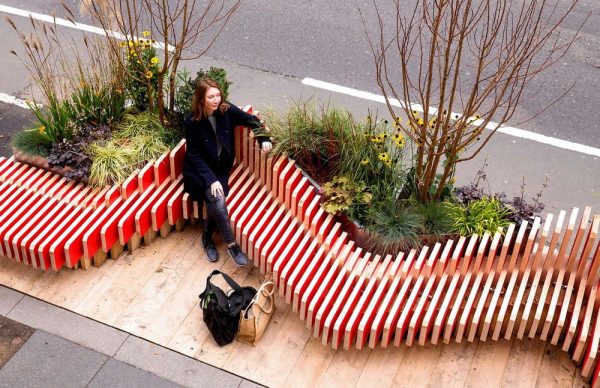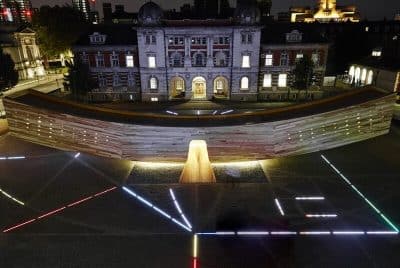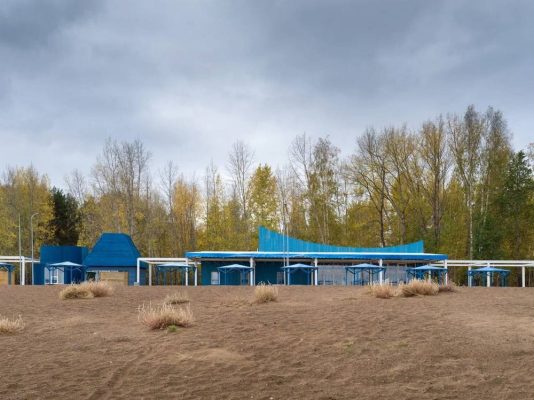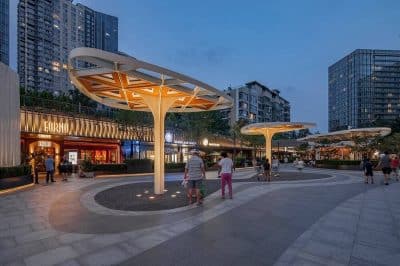Project: Rotunda Church of St. Wenceslas
Architects: Marek Jan Štěpán / Atelier Štěpán
Collaborators: František Brychta, Jan Martínek, Tomáš Jurák, Jan Vodička, Hana Kristková
Interior wall decoration: Vladimír Kokolia
Location: Sazovice, Czech Republic
Year 2017
Photography: Jakub Skokan, Martin Tůma / BoysPlayNice
Church of St. Wenceslas in Sazovice is a modern rotunda and contemporary architecture built on conservative principles from Moravian architectural office Atelier Štěpán. The idea of building a church in Sazovice dates from the interwar period. In 2011 the people of Sazovice brought the idea again and founded the association of church building. The first important task was to find a particular location, which would help to amplify the spiritual sense of church. According to the masterplan, we discovered 4 possible sites for the building. Only one of them was in the heart of Sazovice perfectly linked with the surrounding building structure and its social connections.
The surroundings create a bay for the church that brings great importance to this place for following generations. Searching for the right form of the rotunda church started with a simple cylinder, which became a perfect volume for this place. The circle has always been understood as a divine symbol, in contrast to the worldly rectangle. The rotunda church establishes the focal point of the village, in the intersections of main directions and it makes you feel it’s a sacred place.
The building refers to rotundas built in St. Wenceslas’ time in 10th century. He founded a rotunda, that has, according to the historical sources, similar diameter to the church in Sazovice. The old rotunda church was rebuilt into a new gothic square shaped chapel within the Prague cathedral. We circumscribed a circle around the square and continued to design with the same proportions and positioning of altar, entrance and stairs. The relics of St. Wenceslas are in the Prague chapel and newly in the altar in Sazovice. During the construction, we discovered a connection between the both buildings. While standing in front of the altar and looking through the main window, designed by intuition, you are watching in the direction of St. Wenceslas chapel. This fact supports the rightness of the design and may be a result of a contribution of force majeure.
“My aim was to dematerialize the building. When you observe the volume, you feel the lightness made by design principle of tapering the walls into tiny lines. It’s like cutting a paper cylinder and exploring its possibilities. I created the windows by pushing and pulling the cuts and letting the light glide softly on the walls. I believe there is something or better Somebody behind the material world. In Sazovice I tried to find it through the volume and defined space. As an architect, I explore the space and its impact on people. The church should influence people’s mind, whether they understand it consciously or subconsciously. This is the reflection of something divine in the volume, defined space and something what is behind the walls. The church invites us inside and provides a sense of quietness and peace. You can experience being alone with God if you want. The interior is very personal and it’s better to come and live it out.”
The interior of rotunda church is poetically minimalistic with modest decoration. Historical churches are full of visual information – the entire story is written in paintings, sculptures, in decorations. For example, interior in Baroque church was completely descriptive to give illiterate people an idea about Jesus’ life. Nowadays we are overwhelmed with information and we tend to search for a quiet place of meditation and realizing own inner being.
The altar is a bronze shell in a simple organic shape with a perfect surface symbolizing the God’s touch (known from Sistine Chapel in fresco painting by Michelangelo). During the creative process, I explored the contact of masses, which is similar to the human contact. The touch creates a movement and it is a beginning of a new energy. The moment of the touch is concentrated in a point like a tangent to the circle. And the energy is flowing from one to another and it finally creates connection that brings a message. It reminds me of the rituals performed during confirmation, laying on of hands during sanctification or forwarding messages that have been being unfolded for two millennia since Jesus came.

